
Culture
16:24, 02-May-2019
Rice Terraces of the Philippine Cordilleras: A testament to human-nature harmony
Updated
17:22, 02-May-2019
Bu Shi
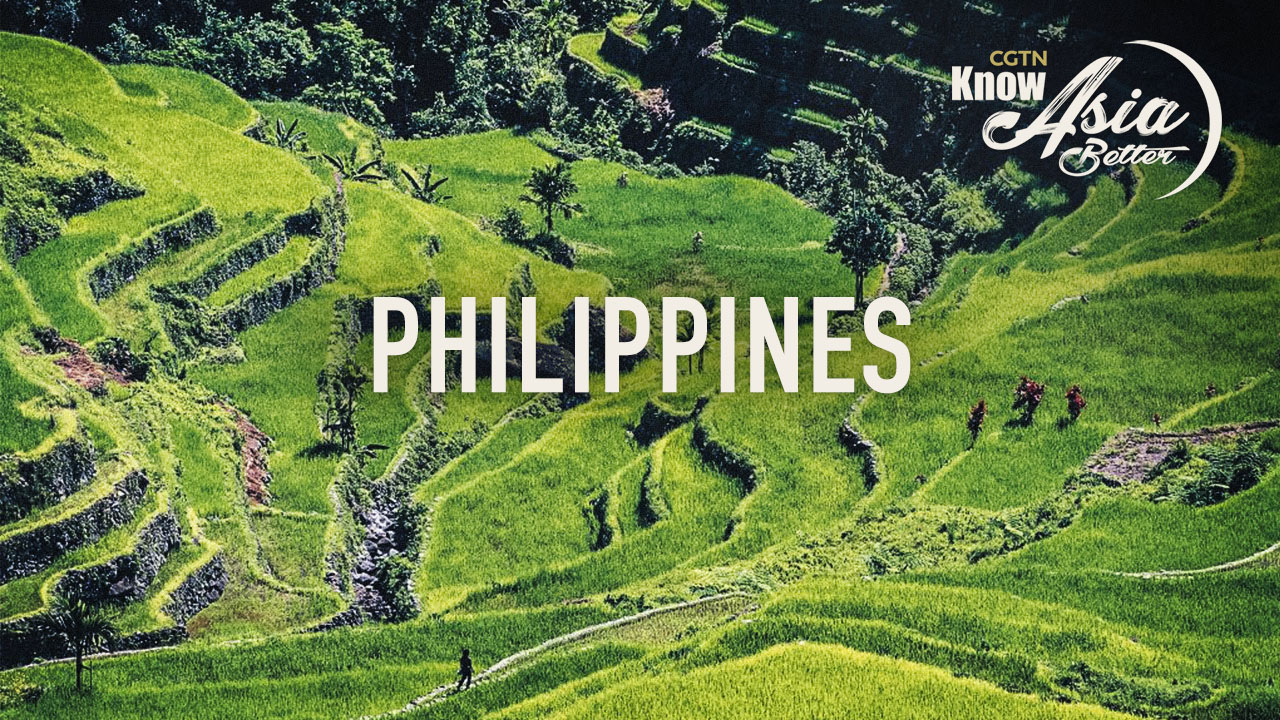
There are many famous terrace sites across Asia. The Yuanyang Terraces and Honghe Hani Rice Terraces of China, the Hamanoura Rice Terraces over in Japan, and Indonesia's Tegalalang Rice Terraces to name a few. But nothing compares to the Rice Terraces of the Philippine Cordilleras, a two-millennia-old living cultural landscape and an outstanding example of sustainable agriculture with traditional techniques.
Located in the remote areas of the Cordillera mountain range in Ifugao Province, the terrace fields were carefully cultivated by generations of Ifugao people. They follow the bleak and rugged contour of the Cordillera mountain, climbing thousands of feet from the foot of hills – a vista known as the "stairways to heaven."
This marvel started 2,000 years ago when the minority ethnic group of Ifugao used stone and mud walls to make terraced pond fields on steeper slopes that hold water trickling down from forests and mountain tops. To this day, these pond fields are still in use along with their original irrigation system, which remains virtually unchanged in the face of modern challenges.
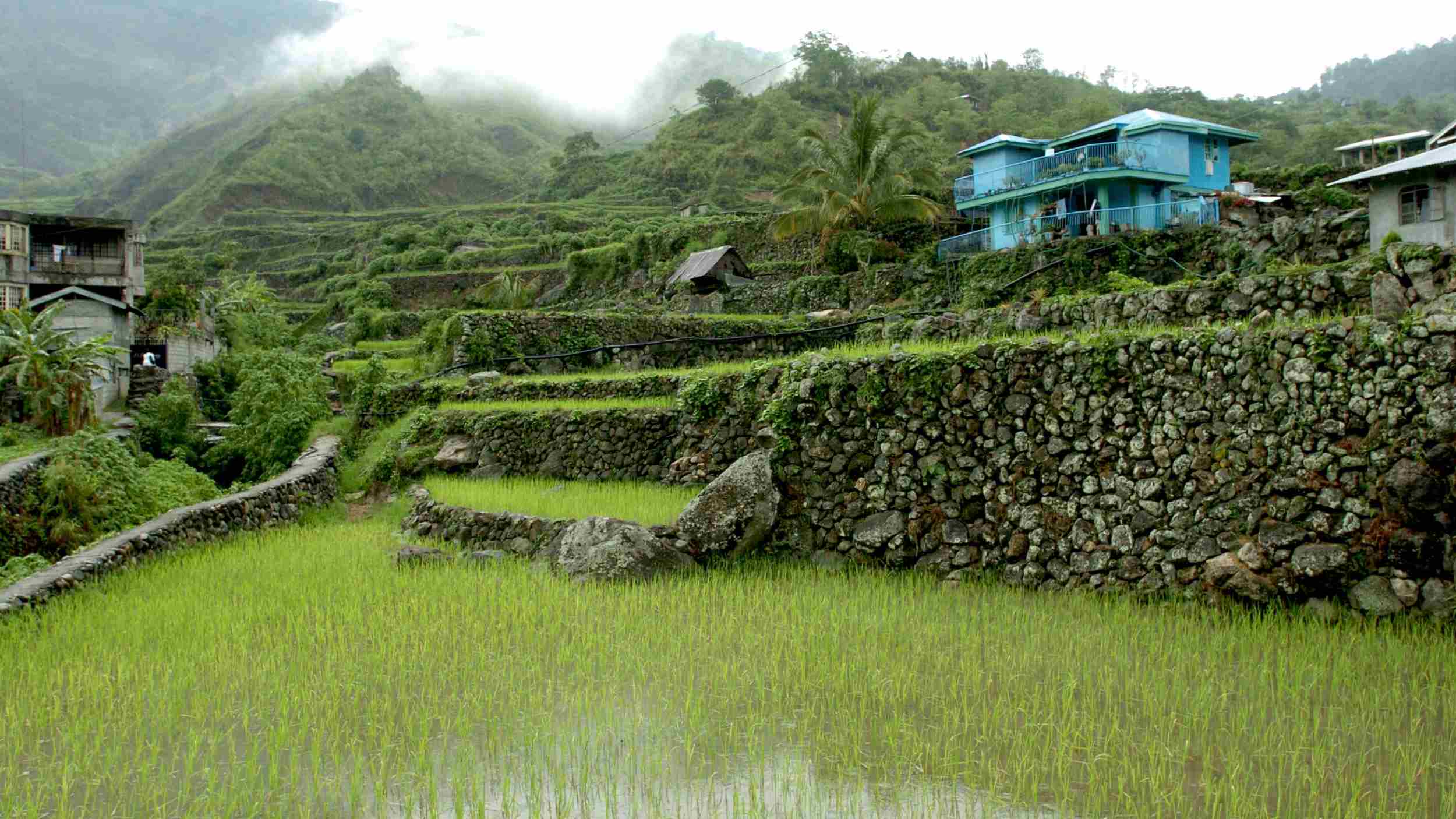
Houses sit on the slopes of traditional rice terraces in the mountainous Cordillera region./ VCG Photo
Houses sit on the slopes of traditional rice terraces in the mountainous Cordillera region./ VCG Photo
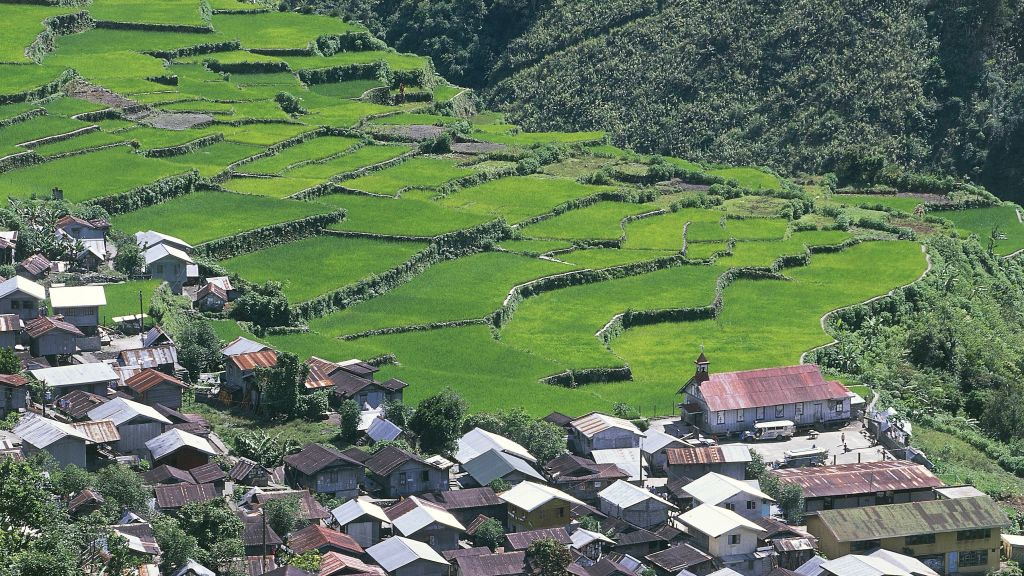
A view of the Rice Terraces of the Philippine Cordilleras, Luzon Island, the Philippines./ VCG Photo
A view of the Rice Terraces of the Philippine Cordilleras, Luzon Island, the Philippines./ VCG Photo
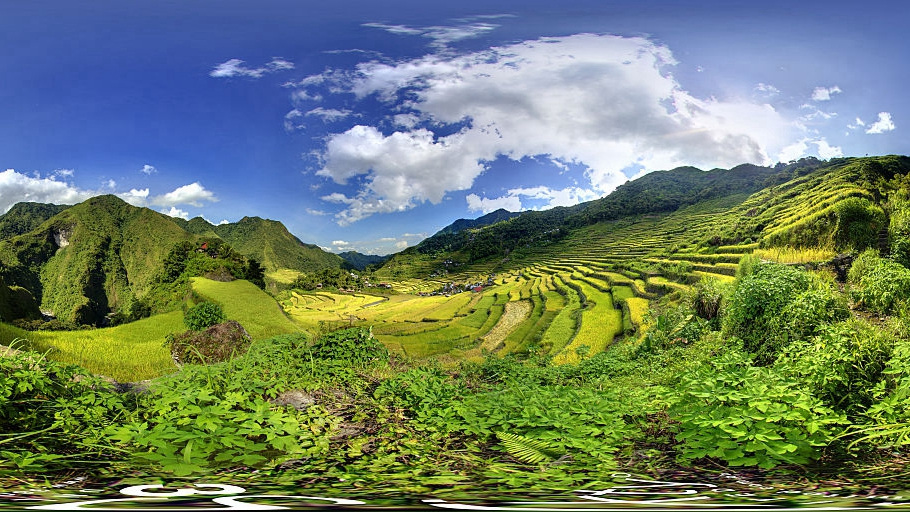
Stunning rice terraces in Banaue City, Ifugao Province, Cordilleras, the Philippines./ VCG Photo
Stunning rice terraces in Banaue City, Ifugao Province, Cordilleras, the Philippines./ VCG Photo
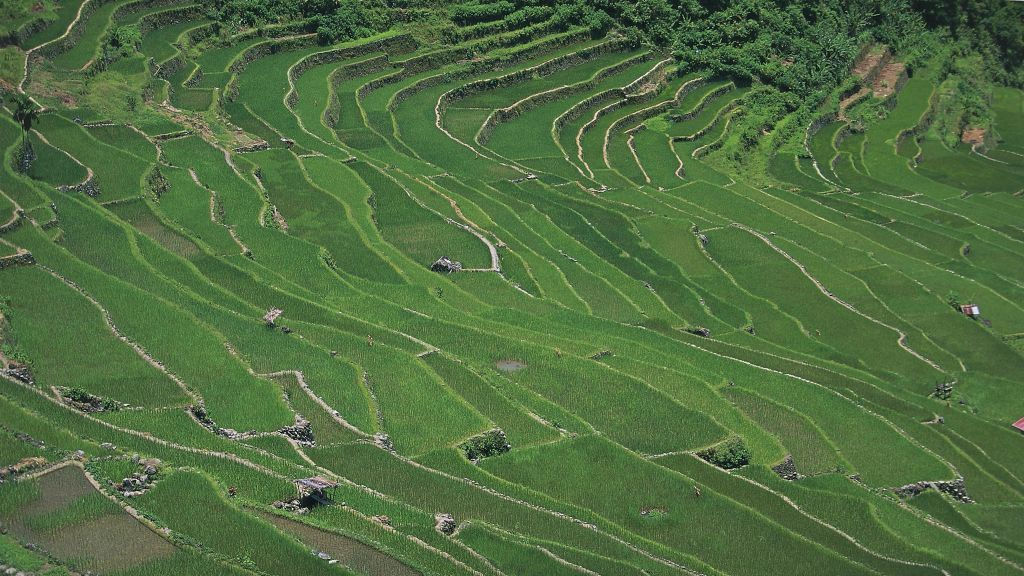
A view of the Rice Terraces of the Philippine Cordilleras, Luzon Island, the Philippines./ VCG Photo
A view of the Rice Terraces of the Philippine Cordilleras, Luzon Island, the Philippines./ VCG Photo
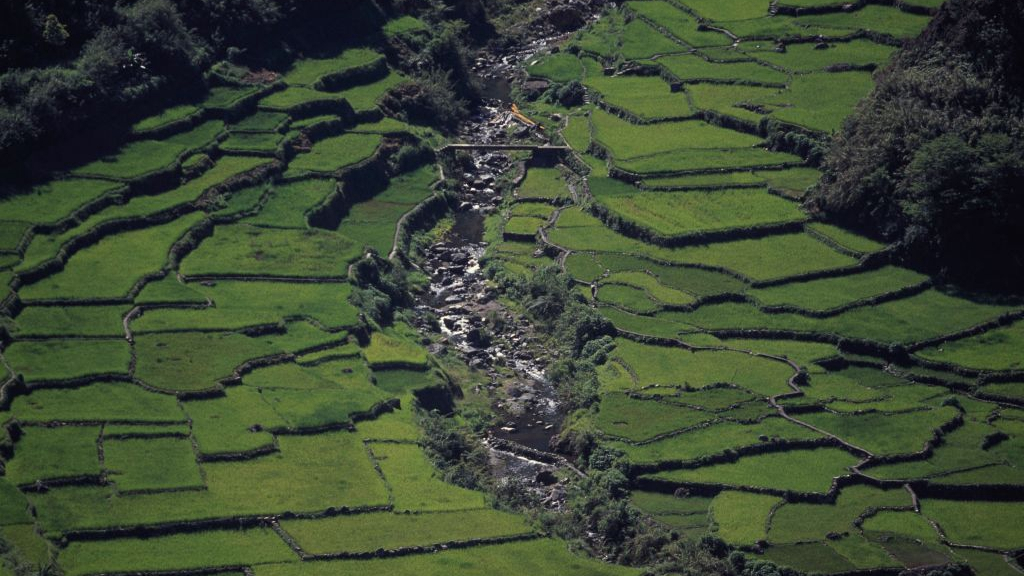
A view of the Rice Terraces of the Philippine Cordilleras, Luzon Island, the Philippines./ VCG Photo
A view of the Rice Terraces of the Philippine Cordilleras, Luzon Island, the Philippines./ VCG Photo
But the value of the terraces goes beyond rice production and its reflection of engineering wisdom of the Ifugao people. They are a representation of the community's social, cultural, economic, religious and political characteristics.
Most importantly, their design has provided an example of land use that resulted from a harmonious interaction between people and the environment. For these reasons, the Rice Terraces of the Philippine Cordilleras were added to the UNESCO World Heritage List in 1995, gradually coming under the international spotlight, and offering tourists a window to know the Philippines through its unparalleled beauty.
What are the cultural elements that best represent Asia? Follow up the "Know Asia Better" series. It will offer you a glimpse of 47 Asian countries, through architecture, art or cultural figures to show you a diversified Asia that you may never have noticed before. Themed in the exchanges and mutual learning among Asian civilizations and building a community with a share future for mankind, the Conference on Dialogue of Asian Civilizations will be held in Beijing in May.

SITEMAP
Copyright © 2018 CGTN. Beijing ICP prepared NO.16065310-3
Copyright © 2018 CGTN. Beijing ICP prepared NO.16065310-3